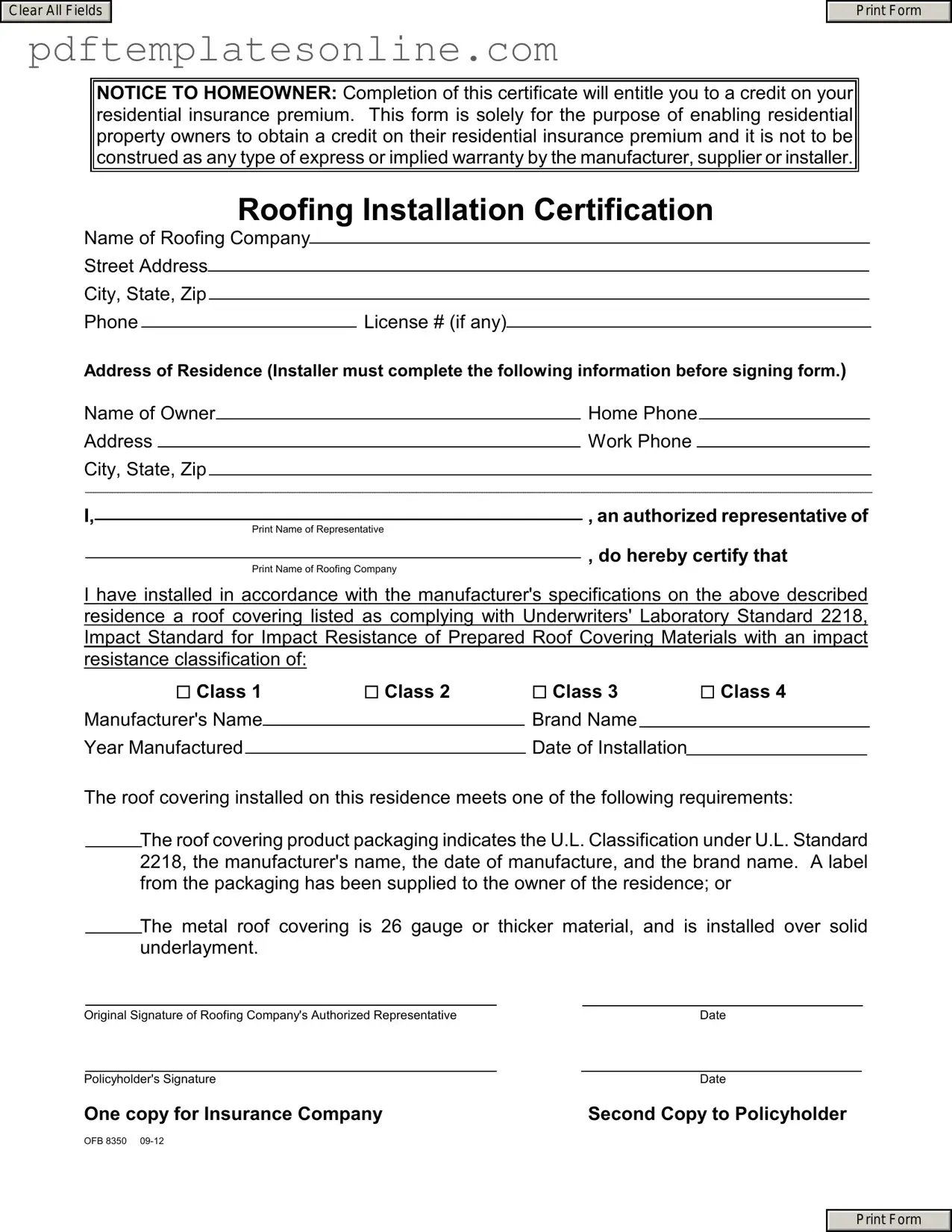Filling out the Roofing Certificate form correctly is essential for homeowners looking to reduce their residential insurance premiums. However, many people make common mistakes that can lead to delays or even denial of their requests. Understanding these pitfalls can help ensure a smoother process.
One frequent mistake is failing to provide complete information. Homeowners sometimes overlook sections of the form, such as the roofing company’s address or license number. Each detail is crucial, as incomplete information can result in the form being rejected or returned for clarification.
Another common error is not verifying the roofing company’s qualifications. Homeowners should ensure that the roofing company is licensed and has the necessary credentials. If the roofing company is not properly certified, the homeowner may not be eligible for the premium reduction.
Many individuals also neglect to check the impact resistance classification of the roof covering. The form requires homeowners to indicate the classification, which ranges from Class 1 to Class 4. Missing this information can lead to confusion and may affect the insurance premium reduction.
Additionally, incomplete labeling of products is a common oversight. Homeowners must ensure that all individual roofing materials are labeled according to U.L. Standard 2218. If the labels are missing or incorrect, the insurance company may not honor the premium reduction.
Another mistake involves not including the date of installation. This date is critical for the insurance company to determine eligibility for the premium reduction. If the date is omitted or incorrect, it can create complications in processing the request.
Some homeowners also fail to retain copies of the form. It’s important to keep a copy for personal records and provide another to the insurance company. Not having a copy can lead to difficulties if questions arise later about the installation or the certification.
Lastly, overlooking the signature requirement is a significant error. The form must be signed by an authorized representative of the roofing company. Without this signature, the certification is not valid, and the homeowner cannot claim the premium reduction.
By being aware of these common mistakes, homeowners can navigate the Roofing Certificate form more effectively. Taking the time to double-check the information provided can lead to a successful application and a well-deserved reduction in insurance premiums.
